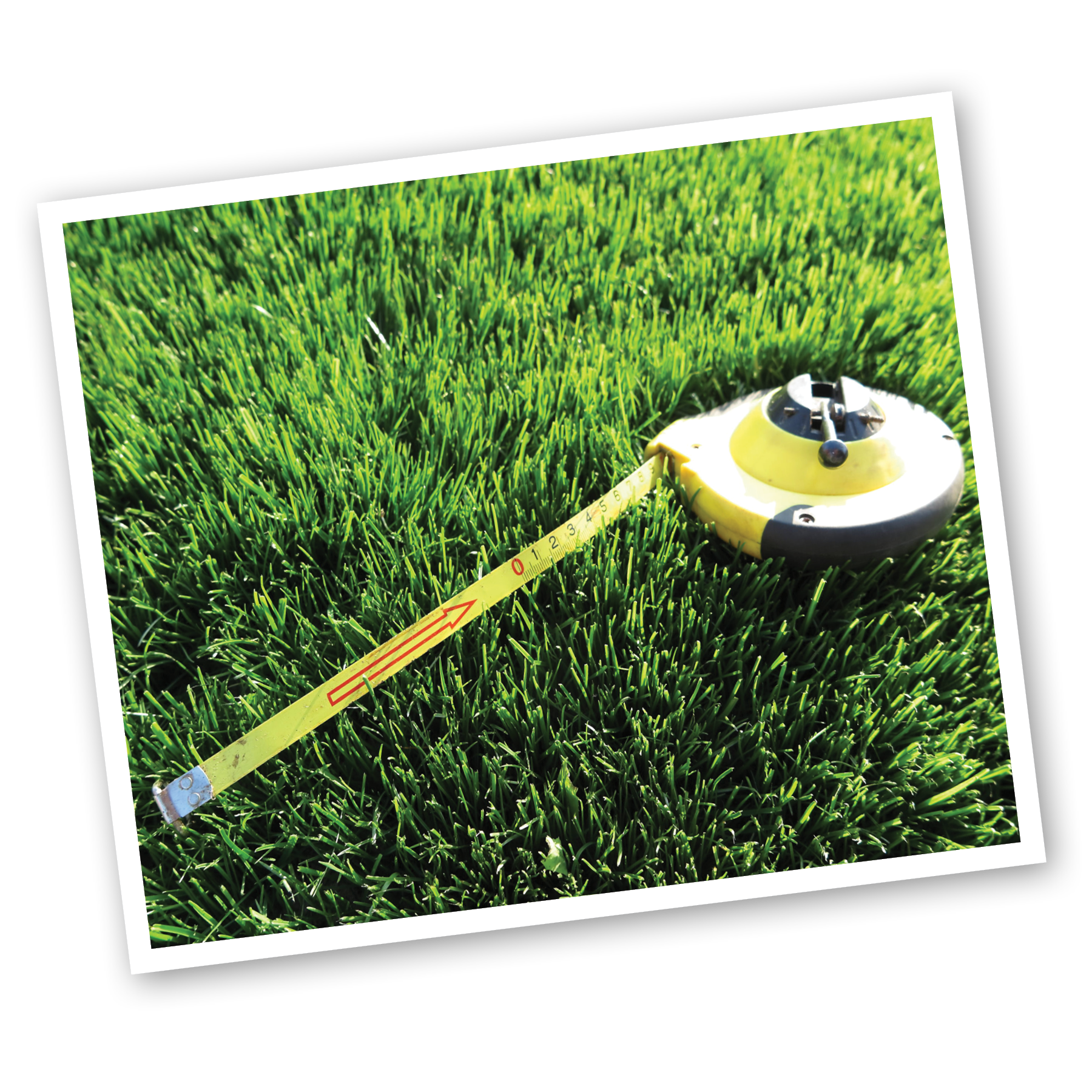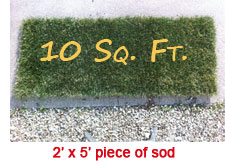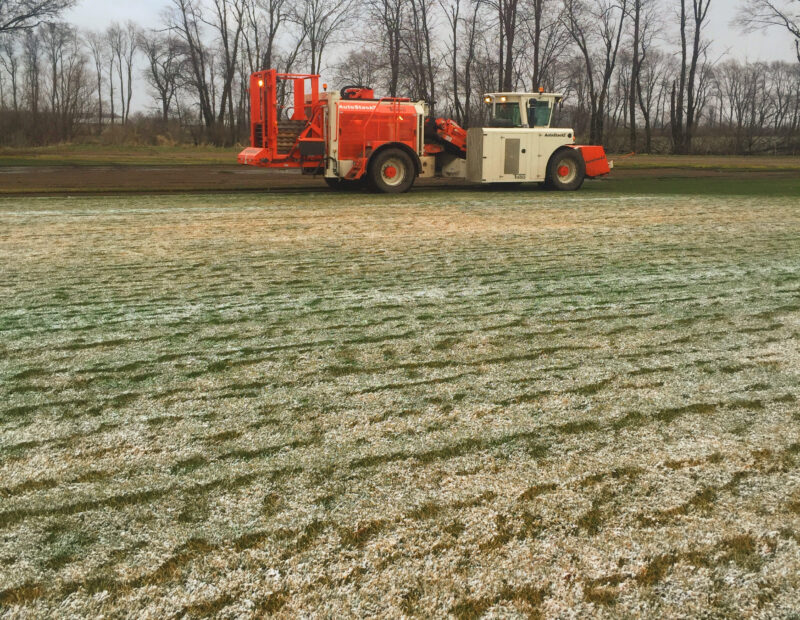

Rectangles and squares – multiply the length times the width.
Rectangles with different length sides – find the average lengths of the two opposite sides and multiply that by the averages of the other opposite side.
Right triangles – divide by 2 one side that has a right corner and multiply that by the length of the other side that has a right corner.
Circles – multiply 3.14 times the radius, times the radius.
USE A TAPE MEASURE or measuring wheel to measure areas you want to sod.
MEASURE IN FEET versus metric.
ROUND EACH MEASUREMENT up or down to the nearest half foot.
USE ACTUAL MEASUREMENTS you take, instead of using information from a plot plan. Oftentimes, “as drawn” measurements differ from actual “built” measurements.
ORDER EXTRA SOD to account for trimming and errors in measuring difficult areas. You can use leftover rolls in other spots or offer to your neighbors.
DIVIDE LAWN IN SECTIONS and measure each section.
To determine how much sod you need for your lawn, follow these basic steps:


Rectangles and squares
– multiply the length times the width.
Rectangles with different length sides – find the average lengths of the two opposite sides and multiply that by the averages of the other opposite side.
Right triangles
– divide by 2 one side that has a right corner and multiply that by the length of the other side that has a right corner.
Circles
– multiply 3.14 times the radius, times the radius.
USE A TAPE MEASURE
or measuring wheel to measure areas you want to sod.
MEASURE IN FEET
versus metric.
ROUND EACH MEASUREMENT
up or down to the nearest half foot.
USE ACTUAL MEASUREMENTS
you take, instead of using information from a plot plan. Oftentimes, “as drawn” measurements differ from actual “built” measurements.
ORDER EXTRA SOD
to account for trimming and errors in measuring difficult areas. You can use leftover rolls in other spots or offer to your neighbors.
DIVIDE LAWN IN SECTIONS and measure each section.
To determine how much sod you need for your lawn, follow these basic steps:

Red Hen Turf Farm’s
Sod Harvesting Season
will NOT END
until the end of November
or even well into December
– weather-permitting –
* * *
A quick call will confirm our
DAILY SOD HARVEST FORECAST
– 574-232-6811 –
is the number to call
and
Learn More >>> HERE